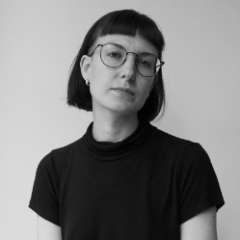The concert opened with BBC newsreader Julia Somerville, summarising news from the year 1915 at an old-fashioned broadcasting desk complete with microphone. It was informative, and set the scene for this recital, one in a series of ‘time capsule’ concerts, solely featuring music composed in 1915 – including two of Debussy’s last chamber pieces.
The evening unfolded with a list of musicians to spoil the ear of any classical music enthusiast. Every work was performed by a different group of people, which is not something that happens very often, but was a supreme luxury for listeners at the Pittville Pump Room. First on stage and beautifully gowned were Jennifer Stumm (viola), Sally Pryce (harp) and Emily Benyon (flute) to perform Debussy’s Sonata for flute, viola and harp. As a group, the three performers were well connected and engaged, and each provided complementing tones despite the individual timbre of each separate instrument. Jennifer Stumm had a rich guttural quality to her playing that was bold yet added colour to Debussy’s rainbow of a harmonic world. Despite going back in time, the performers were looking forward in technology. To contrast with the concert’s theme, the old was juxtaposed with the new: Stumm performed her music from an iPad with a pedal to turn pages.
Not only were there electrical devices in the evening’s programme, but there were also electrical performances. Never have I heard a violinist such as the Norwegian Henning Kraggerud. His virtuosic performance had an ethereal sound quality that made his arms appear bewitched, and the nature of Polish composer Karol Szymanowski’s 3 Myths really added to the effect. The three movements show influence in harmonic colour from Debussy and Ravel and mark the start of Szymanowski’s ‘impressionist’ period of composition.
Performing alongside Kraggerud was Norwegian Christian Ihle Hadland on piano. The duo brought Szymanowski’s mythological nymphs to the stage; it was as if they were dancing around the instruments and creating currents of energy in the fingers of the performers. The highlight of this performance was a theme in ‘Dryads and Pan’ which represented the nature-god Pan’s flute. Hadland put his foot on the damper pedal and Kraggerud played violin harmonics into the main body of the piano, letting the strings ring and echo to truly astonishing effect. As well as being accompanist in Myths, Hadland had a chance to show us his skills as a soloist as he took centre stage after the interval in Bartók’s Romanian Folk Dances. After a lively and entertaining performance, he finished the dances with a note, a nod and a cheeky grin towards the audience.
As if the line up hadn’t already been fantastic enough, two more incredible musicians were introduced for Debussy’s Cello Sonata, the final piece before the interval. World-renowned cellist Steven Isserlis gave a majestic performance accompanied by pianist Connie Shih. Shih gave a strong performance without overwhelming Isserlis, who played with vigour and style. The animated final movement was met with great applause as it ended on throwaway chords accompanied by stomps from Shih and Isserlis.
To draw the evening to a close, the Escher String Quartet and clarinettist Matthew Hunt played Max Reger’s Clarinet Quintet in A. An expressive performance from Hunt and a fantastic dress from second violinist Wu Jie made visual impact for an otherwise easy-listener of a piece. After an engaging number of pieces and incredible performances, it was great to sit back and relax to amiable and gentle music. This was certainly a concert to remember, with diversity of performers, energy, and unpretentious, quality classical music in a healthy dose.


